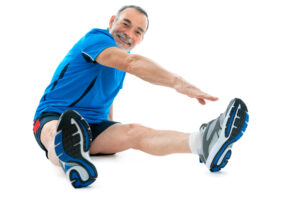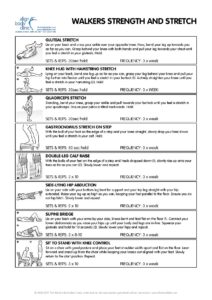walking for fitness for over 65s

 We are often asked ‘what is the best exercise for older people to do?’ Simply put, the best type of exercise that anyone can do is one which you enjoy and will continue to do with regularity. The benefits of exercise are mostly felt when you perform the chosen activity consistently over a period of weeks or months. When you stop, the benefits also stop.
We are often asked ‘what is the best exercise for older people to do?’ Simply put, the best type of exercise that anyone can do is one which you enjoy and will continue to do with regularity. The benefits of exercise are mostly felt when you perform the chosen activity consistently over a period of weeks or months. When you stop, the benefits also stop.
As the UK is currently in lockdown, with gyms closed and options for exercise limited one of the more common activities that many older people can still access is walking. If you are relatively new to walking as a form of exercise, or you want to start, then this article is for you!
Why Walking?
Lockdown aside, walking has many proven benefits and positive features as a form of exercise for the older adult;
- It is cheap – most people have a pair of trainers and a coat, which is all you will need!
- It is accessible – no memberships, entry requirements, specific equipment, or hidden fees!
- Heart disease and problems with the cardiovascular system become more common as we get older. The ‘low level’ intensity of walking has benefits to the cardiovascular system, blood pressure, and circulation in older adults (1).
- Walking for 30 minutes a day can reduce the incidence of Type II Diabetes by 50%. (2).
- Loss of muscle strength and bone density are common reasons for frailty as we get older. Walking is a weight-bearing exercise, meaning that it will reduce bone loss and maintain some muscle mass in the lower limbs leading to less of an impact on the ability to perform daily tasks as we get older (1).
- Daily walking can help guard against symptoms of depression (a common issue seen in older adults) (3).
- Regular walking is associated with a reduced risk of dementia (4).
What more motivation do you need?
Having a plan is helpful to getting the full benefit of any form of exercise, knowing how often, for how long, and how intense are key elements to plan for.
How often, and for how long should I be walking to get the benefits?
The NHS guidance (5) regarding exercise is that you should engage in ‘moderate’ intensity exercise for at least 150 minutes per week, or 75 minutes of vigorous exercise. You can break this 150/75 minutes up into whatever chunks you wish, you will still get some benefit. However, the more specific benefits listed above for improvements in Type II diabetes were seen with 30 minutes of walking a day (2), and the reduced risk of dementia was seen more commonly in people who walked faster (4). The most important thing that we recommend is that you choose the timings and durations that best work for you to enjoy the walk as the fun aspect will strongly influence your ability to maintain this good exercise habit. Go when the weather is better, or when you feel you have time to enjoy the activity, rather than rushing to fit it in.
How fast should I walk?
This is a hard one to measure, a good tool to use is the Rate of Perceived Exertion scale. Older adults who have just started walking as exercise will want to keep their RPE score around 4-6 in the first couple of weeks to avoid getting too burnt out too soon. After a few weeks then you should start to include some periods in your walks that score around 7-8 RPE. This is easily achieved, either by walking uphill or increasing your stride length and speed. For those of you starting out our recommendation for this would be to introduce an RPE 7-8 once a week to in the third week of walking for no more than 15 minutes. Then if you cope with that with no issues then you can increase it by 5 minutes per week at the most.
How often should I rest?
As we get older our muscles take longer to recover, and our cardiovascular system is slower to accommodate the changes needed to increase our fitness levels (1). To start with you should be resting every other day to give your body the chance to recover before you exert yourself again. As you increase your fitness levels then you should be able to increase the frequency, the intensity, and the duration of your walks but increasing all of these variables at the same time may increase the likelihood of fatigue and muscle soreness. Our recommendation here would be to increase one variable at a time. One week increase the total walking time, then the next week add in 5 minutes more of a higher RPE, etc. If you are planning a very long/intense walk that would be at the limits of your ability then you should rest the one day before, and then 2 days afterward.
Is there anything else I can do to help with getting the most out of my walks?

There are a few things that can increase the fun element of walking;
Walking can be a very pleasurable activity to perform with others as it lends itself to conversation. Maybe you could persuade your partner or family member to join you (when the lockdown is over then go in a group, or join a walking club).
Vary your route – We are blessed in Bath to have so many great places to walk in the city and the surrounding countryside, find new places, get suggestions from friends. By varying your route you will keep the activity novel and you are more likely to sustain in regularly. There are several websites dedicated to walking routes, such as Walking Britain.
Record your progress – this used to mean a notebook or a spreadsheet, but now we have all manner of devices that can record distance, time, elevation, and lots of other stuff. You can invest in expensive things like FitBits or Smartwatches, but nearly all smartphones will be able to use a free app like Strava where you can track your progress. By logging your progress you can see how far you have come and plan your progression for the weeks and months ahead.
 Get stronger to walk – strong leg and trunk muscles mean you will have less chance of injury and soreness as your walks increase in length and intensity. By being stronger you will be more efficient and be able to cope with more challenging terrain such as mountain trails and hills (as well as the winter mud!). See here for some basic stretch and strength exercises for the older walker.
Get stronger to walk – strong leg and trunk muscles mean you will have less chance of injury and soreness as your walks increase in length and intensity. By being stronger you will be more efficient and be able to cope with more challenging terrain such as mountain trails and hills (as well as the winter mud!). See here for some basic stretch and strength exercises for the older walker.
Is an injury or pain stopping you walking?
Do you want to know what is causing your pain and if we can help? Why not take advantage of our new patient assessment introductory offer to get you started towards a tailor made recovery plan for only £19.
Are you in a lot of pain and want to get better as soon as possible? If so then why not book in for a new patient consultation, with treatment on the day, for £75.
REFERENCES
1 – AH Taylor, NT Cable, G Faulkner, M Hillsdon, M Narici & AK Van Der Bij (2004) Physical activity and older adults: a review of health benefits and the effectiveness of interventions, Journal of Sports Sciences, 22:8, 703-725.
2 – Hamasaki H. (2016). Daily physical activity and type 2 diabetes: A review. World journal of diabetes, 7(12), 243–251.
3 – Lampinen. P, et al (2002). Changes in Intensity of Physical Exercise as Predictors of Depressive Symptoms among Older Adults: An Eight-Year Follow-Up. Preventive Medicine Volume 30, Issue 5, May 2000, Pages 371-380.
4 – Abbott RD, et al (2004). Walking and Dementia in Physically Capable Elderly Men. JAMA, 292(12):1447–1453.
5 – NHS (2019). Exercise. Available at https://www.nhs.uk/live-well/exercise/

